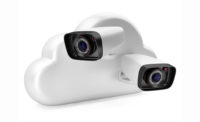I-View Now, a software company that has been providing video verification services to central stations and end users since 2011, will be releasing its Police Alarm Portal video verification solution for law enforcement as an extension of its existing technology.
The Police Alarm Portal is a patented process that allows the central station to send the alarm through the ASAP to PSAP system with video verification within that message, allowing officers to see what is happening at the location where the alarm was triggered before arriving.
“Now law enforcement has all the information about what’s going at a facility so they can then generate a priority response,” said Marek Robinson, business development, I-View Now, “but simultaneously this is going to keep law enforcement much safer when doing their job because instead of responding blind to a burglar alarm, they now have access to that video in real time.”
The I-View Now platform has been out in the market for six or so years, and Robinson said this is simply the next extension of the platform. “For security dealers or integrators already offering video verification services, when their central stations connect with ASAP to PSAP, this technology is uploaded as well,” he explained. “All the infrastructure exists to be able to do this; it’s literally a matter if just turning it on.”
The service is free to law enforcement, and as the industry continues to adopt ASAP to PSAP, having this technology embedded in that message eliminates the need for any law enforcement or central stations to install additional technology or hardware to be able to see what is going on at the premises before dispatching to the alarm.
I-View Now announced the release of the Police Alarm Portal at the IACP (International Association of Chiefs of Police) annual Tech Conference in Providence, R.I., May 21-23. I-View Now sponsored that event and exhibited in its technology showcase.
I-View Now has been working with a number of agencies in testing, Robinson said, and the response from the agencies has been overwhelmingly positive because they don’t have to add tremendous amounts of hardware or software to be able to use the service, because it comes to them at no charge, and, what Robinson calls the “fundamental issue,” they are able to provide a priority response and a higher level of safety for their officers.
“Video verification is really a critical piece when we think of monitoring in our industry and how it moves forward,” Robinson said. “What we’re doing with the Police Alarm Portal is not only revolutionary, but it is also a major positive impact for the central station, the consumer and for law enforcement.”





